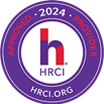+1-800-385-1627
support@hrtrainonline.com
0 items
Toxic Work Behaviors Erode the Patient Experience (More Than You May Know!)
In this webinar you will learn how to calculate what toxic people will cost your organization, At the end of this webinar, you will learn how to Improve patient safety through a system of interventions.
90 Minutes
6 months
30053

Group Attendees: Any number of participants
Recorded Version: Unlimited viewing for 6 months ( Access information will be emailed 24 hours after the completion of live webinar)

The use of this seal confirms that this activity has met HR Certification Institutes (HRCI) criteria for recertification credit pre-approval.
This activity has been approved for
1.5 HR
(General) recertification credit
We can no longer stand by and let toxic people erode patient safety, our self-esteem, and the bottom line! This webinar will help you take immediate action!
This problem is so severe that Dr. Kusy's research discovered:- Only 1-6% of targets of incivility ever filed complaint
- 94% of leaders reported working with toxic people
- 92% rated the severity from 7 to 10 on a 10-point scale
- 45% said the uncivil person lashed out 2-3 times per week
- 51% of victims said they would likely leave as a result
Why should you Attend: Dr. Mitch Kusy and his research colleague conducted an extensive 3-year national study of over 400 individuals on what makes toxic people tick.
More revealing is the impact of toxic people on patient safety:
- 70-80% of medical professionals reported medication errors due to disruptive behaviors
- 51% nurses reported patient errors from physician abuse
- 65% reported lateral abuse (nurse to nurse); 77% from vertical abuse (physician to nurse)
- 50% can't handle the incivility
- 31% nurses quit as a result of a toxic person
- Intimidation caused 49% med errors resulting 27% patient mortality
Areas Covered in the Session:
- How toxic people reduce patient safety
- How toxic people erode team performance
- What to do about toxic providers who are organizational stars
- How to avoid hiring toxic people
- What to do once a toxic individual is there
- Why feedback to toxic people often fail
- How to coach a toxic peer, toxic boss, or toxic direct report
- Patient areas as a result of a toxic person
Who Will Benefit:
- Chief Nursing Office
- Nurse Leads
- Medical Leaders
- Nurses
- Physicians
- Ancillary Healthcare Professionals
- HR Healthcare Leaders
- Healthcare Administrators
 Dr. Mitchell Kusy A 2005 Fulbright Scholar in Organization Development,he is a professor in the PhD. Program, Graduate School of Leadership & Change, Antioch University. Mitch has consulted and been a keynote speaker with hundreds of organizations nationally and internationally-helping create work cultures of respectful engagement impacting individual, team, and bottom-line performance. He previously headed leadership and organization development at American Express and HealthPartners. Previous to his just-released book, Why I Don't Work Here Anymore: A Leader’s Guide to Offset the Financial and Emotional Costs of Toxic Employees, Mitch co-authored five business books-one a best-seller. In 1998, he was named Minnesota Organization Development Practitioner of the Year. He resides in Minneapolis and Palm Springs, and may be contacted at mitchellkusy@gmail.com or via his website at www.mitchellkusy.com. He can be followed on LinkedIn (https://www.linkedin.com/in/dr-mitch-kusy/) and Facebook Business (www.facebook.com/mitchkusy/).
Dr. Mitchell Kusy A 2005 Fulbright Scholar in Organization Development,he is a professor in the PhD. Program, Graduate School of Leadership & Change, Antioch University. Mitch has consulted and been a keynote speaker with hundreds of organizations nationally and internationally-helping create work cultures of respectful engagement impacting individual, team, and bottom-line performance. He previously headed leadership and organization development at American Express and HealthPartners. Previous to his just-released book, Why I Don't Work Here Anymore: A Leader’s Guide to Offset the Financial and Emotional Costs of Toxic Employees, Mitch co-authored five business books-one a best-seller. In 1998, he was named Minnesota Organization Development Practitioner of the Year. He resides in Minneapolis and Palm Springs, and may be contacted at mitchellkusy@gmail.com or via his website at www.mitchellkusy.com. He can be followed on LinkedIn (https://www.linkedin.com/in/dr-mitch-kusy/) and Facebook Business (www.facebook.com/mitchkusy/).
